The following indentifies several pollution issues affecting the watershed and details possible solutions to reduce pollution on Grand Lake St. Marys.
Nutrient Runoff
Nutrient runoff from livestock waste, fertilizers, and other sources is one of the major reasons for lake degradation. Rainwaters wash waste and fertilizers from agricultural land into tributaries that ultimately lead to Grand Lake St. Marys, which has loaded the lake with nutrients such as phosphorous and nitrogen. Between 150,000 and 200,000 tons of silt enter the lake annually.
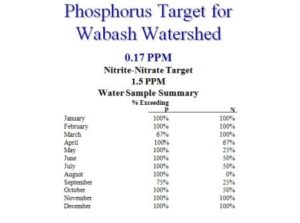
The abundance of phosophorous and nitrogen upset the natural balance of the ecosystem and provide a breeding ground for blue-green algae. Despite the name, blue-green algae is not a plant but bacteria that gets its energy through photosynthesis (cyanobacteria).
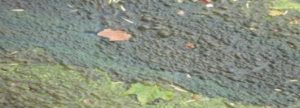
These bacteria produce toxic peptides that harm plants, animals and humans. Such toxins are harmful to the liver, nervous system, and body organs, and can cause health complications ranging from mild rashes and sneezing to severe gastrointestinal distress and convulsions, respiratory distress and respiratory failure, paralysis, and death.
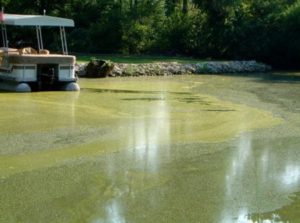
Agriculture isn’t the only source of nutrient pollution in the Wabash Watershed, but it is the main contributor according to the Army Corps Of Engineers:
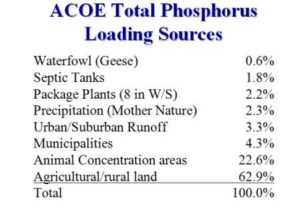
Nutrient runoff is facilitated by:
Over-application of manure. The animals in the GLSM watershed produce 600,000 tons of raw manure each year, which requires 81,000 acres of land area to remain within recommended guideliness. There are only 48,000 acres of land area available to filter the manure.
Subsurface drainage tiles provide a conduit for nutrients to reach the lake faster.
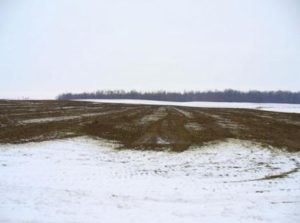
Spreading manure over ice in winter months means the manure flows to the lake along with the meltwater in the spring.

Using roadside ditches as drains, which act as tributaries to Grand Lake St. Marys.
The fact that the Greater Grand Lake St. Marys Region has some of the highest agricultural activity in the nation.
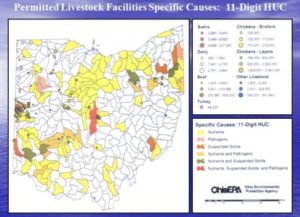
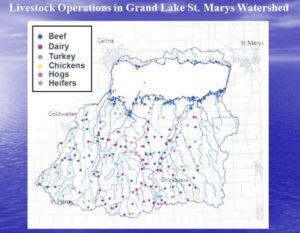
Industrial and Commercial Drainage
Another source of pollution for Grand Lake St. Marys is industrial and commercial drainage. Some sources are directly piped into the lake via industrial and residential channels. Examples include septic tanks, package plants and the lack of community sewage treatment facilities.
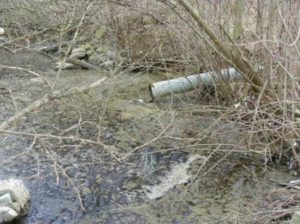
Other Pollution Sources
Other pollution sources include residential lawn fertilizers and waterfowl.
Solutions/Actions
The key to saving Grand Lake St. Marys is to prevent pollution from entering the lake and its tributaries. Fortunately, many of the practices that prevent pollution also make for more efficient agricultural and community operations, ultimately saving time and money and making business more profitable.
Winter crop cover
Best practice manure management (following guidelines in 590 and 633)
Erosion control fencing
Septic system pumping
Community sewage treatment facility installation
Septic inspections and certifications every two years
Proper lawn fertilizer application
Filter strips
No-till farming operations with conservation buffers
Comprehensive livestock nutrient management
